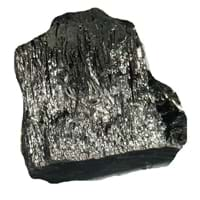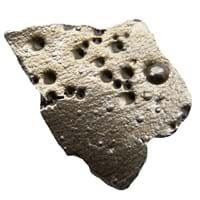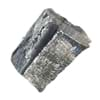Thulium vs Cobalt
Periodic Table
Symbol
Tm
Co
Group Number
Not Available
9
9
Period Number
6
4
Block
f block
d block
Element Family
Lanthanide
Transition Metal
CAS Number
7440304
99+
7440484
38
Space Group Name
P63/mmc
P63/mmc
Space Group Number
194.00
5
194.00
5
Facts
Interesting Facts
- Thulium metal can resist corrosion due to dry air .
- Only Tm-169 isotope of Thulium metal occur naturally.
- The main source of Cobalt is as a by-product of copper and nickel metal mining.
- Cobalt metal can be obtained from other elements like Oxygen, Sulfur and Arsenic.
- It s also used in electroplating process as it exhibits anti cession properties.
Sources
Found in Minerals, Mining, Ores of Minerals
Found in Compounds, Mining, Ores of Minerals
History
Who Discovered
Per Teodor Cleve
Georg Brandt
Discovery
In 1879
In 1732
Abundance
Abundance In Universe
1 * 10-8 %
30
3 * 10-4 %
9
Abundance In Sun
~0.00000002 %
28
~0.0004 %
9
Abundance In Meteorites
0.00 %
99+
0.06 %
10
Abundance In Earth's Crust
0.00 %
99+
0.00 %
21
Abundance In Oceans
0.00 %
99+
0.00 %
20
Abundance In Humans
Not Available
0.00 %
17
Uses
Uses & Benefits
- Thulium metal produces isotopes that emits X-rays. This isotope is used in X-ray machine.
- Thulium element is also used in Surgical equipment like laser.
- Its alloys with aluminum and nickel are used to make powerful magnets.
- Few other alloys exhibit high-temperature strength and hence they are used in Turbines of Jet and Gas engine.
Industrial Uses
NA
Chemical Industry, Electrical Industry, Electronic Industry
Medical Uses
NA
Pharmaceutical Industry
Other Uses
Alloys, Nuclear Research, Research Purposes
Alloys
Biological Properties
Toxicity
Unknown
Toxic
Present in Human Body
No
Yes
In Blood
Not Available
0.04 Blood/mg dm-3
18
In Bone
Not Available
0.04 p.p.m.
27
Physical Properties
Melting Point
1,545.00 °C
23
1,495.00 °C
29
Boiling Point
1,730.00 °C
99+
2,870.00 °C
34
Appearance
Physical State
Solid
Solid
Color
Silvery Gray
Gray
Luster
Metallic
Metallic
Hardness
Mohs Hardness
Not Available
5.00
8
Brinell Hardness
471.00 MPa
25
470.00 MPa
26
Vickers Hardness
520.00 MPa
21
1,043.00 MPa
11
Speed of Sound
Not Available
4,720.00 m/s
14
Optical Properties
Reflectivity
Not Available
67.00 %
11
Allotropes
No
Yes
α Allotropes
Not Available
α-Cobalt
β Allotropes
Not Available
β-Cobalt
γ Allotropes
Not Available
Not Available
Chemical Properties
Chemical Formula
Tm
Co
Isotopes
Known Isotopes
32
7
26
13
Electronegativity
Pauling Electronegativity
1.25
35
1.88
12
Sanderson Electronegativity
Not Available
2.56
1
Allred Rochow Electronegativity
1.11
29
1.70
5
Allen Electronegativity
Not Available
1.84
10
Electropositivity
Pauling Electropositivity
2.75
19
2.12
99+
Ionization Energies
1st Energy Level
596.70 kJ/mol
99+
760.40 kJ/mol
19
2nd Energy Level
1,160.00 kJ/mol
99+
1,648.00 kJ/mol
31
3rd Energy Level
2,285.00 kJ/mol
99+
3,232.00 kJ/mol
22
4th Energy Level
4,120.00 kJ/mol
33
4,950.00 kJ/mol
19
5th Energy Level
Not Available
7,670.00 kJ/mol
12
6th Energy Level
Not Available
9,840.00 kJ/mol
12
7th Energy level
Not Available
12,440.00 kJ/mol
11
8th Energy Level
Not Available
15,230.00 kJ/mol
12
9th Energy Level
Not Available
17,959.00 kJ/mol
13
10th Energy Level
Not Available
26,570.00 kJ/mol
7
11th Energy Level
Not Available
29,400.00 kJ/mol
8
12th Energy Level
Not Available
32,400.00 kJ/mol
8
13th Energy Level
Not Available
36,600.00 kJ/mol
8
14th Energy Level
Not Available
39,700.00 kJ/mol
9
15th Energy Level
Not Available
42,800.00 kJ/mol
12
16th Energy Level
Not Available
49,396.00 kJ/mol
11
17th Energy Level
Not Available
52,737.00 kJ/mol
13
18th Energy Level
Not Available
134,810.00 kJ/mol
1
19th Energy Level
Not Available
145,170.00 kJ/mol
2
20th Energy Level
Not Available
154,700.00 kJ/mol
4
21st Energy Level
Not Available
167,400.00 kJ/mol
4
22nd Energy Level
Not Available
178,100.00 kJ/mol
3
23rd Energy Level
Not Available
189,300.00 kJ/mol
3
Electrochemical Equivalent
2.10 g/amp-hr
26
1.10 g/amp-hr
99+
Electron Work Function
Not Available
5.00 eV
5
Other Chemical Properties
Ionization, Radioactive Isotopes, Solubility
Chemical Stability, Ionization
Atomic Properties
Atomic Number
69
99+
22
99+
Electron Configuration
[Xe] 4f13 6s2
[Ar] 3d2 4s2
Crystal Structure
Hexagonal Close Packed (HCP)
Hexagonal Close Packed (HCP)
Crystal Lattice
HCP-Crystal-Structure-of-Thulium.jpg#100
HCP-Crystal-Structure-of-Cobalt.jpg#100
Atom
Number of Protons
69
99+
22
99+
Number of Neutrons
100
32
26
99+
Number of Electrons
69
99+
22
99+
Radius of an Atom
Atomic Radius
176.00 pm
18
147.00 pm
34
Covalent Radius
160.00 pm
30
160.00 pm
30
Van der Waals Radius
Not Available
200.00 pm
28
Atomic Weight
168.93 amu
99+
47.87 amu
99+
Atomic Volume
18.10 cm3/mol
28
10.64 cm3/mol
99+
Adjacent Atomic Numbers
Valence Electron Potential
49.70 (-eV)
28
95.20 (-eV)
10
Lattice Constant
353.75 pm
40
295.08 pm
99+
Lattice Angles
π/2, π/2, 2 π/3
π/2, π/2, 2 π/3
Lattice C/A Ratio
1.57
17
Not Available
Mechanical Properties
Density
Density At Room Temperature
9.32 g/cm3
40
4.51 g/cm3
99+
Density When Liquid (at m.p.)
8.56 g/cm3
24
4.11 g/cm3
99+
Tensile Strength
Not Available
434.00 MPa
9
Viscosity
Not Available
Not Available
Vapor Pressure
Vapor Pressure at 1000 K
0.06 (Pa)
10
Not Available
Vapor Pressure at 2000 K
Not Available
0.98 (Pa)
14
Elasticity properties
Shear Modulus
30.50 GPa
22
44.00 GPa
17
Bulk Modulus
44.50 GPa
26
110.00 GPa
15
Young's Modulus
74.00 GPa
27
116.00 GPa
18
Poisson Ratio
0.21
31
0.32
12
Other Mechanical Properties
Ductile, Malleable
Ductile
Magnetic Properties
Magnetic Characteristics
Specific Gravity
9.32
31
4,500.00
1
Magnetic Ordering
Paramagnetic
Paramagnetic
Electrical Properties
Electrical Property
Conductor
Poor Conductor
Resistivity
676.00 nΩ·m
5
420.00 nΩ·m
12
Electrical Conductivity
0.02 106/cm Ω
99+
0.02 106/cm Ω
99+
Electron Affinity
50.00 kJ/mol
21
7.60 kJ/mol
37
Thermal Properties
Specific Heat
0.16 J/(kg K)
35
0.52 J/(kg K)
9
Molar Heat Capacity
27.03 J/mol·K
22
25.06 J/mol·K
99+
Thermal Conductivity
16.90 W/m·K
99+
21.90 W/m·K
99+
Critical Temperature
Not Available
Not Available
Thermal Expansion
13.30 µm/(m·K)
29
8.60 µm/(m·K)
99+
Enthalpy
Enthalpy of Vaporization
191.00 kJ/mol
99+
429.00 kJ/mol
15
Enthalpy of Fusion
16.80 kJ/mol
17
15.48 kJ/mol
19
Enthalpy of Atomization
247.00 kJ/mol
99+
468.60 kJ/mol
15
Standard Molar Entropy
74.00 J/mol.K
9
27.30 J/mol.K
99+
|
||
|
||
|












